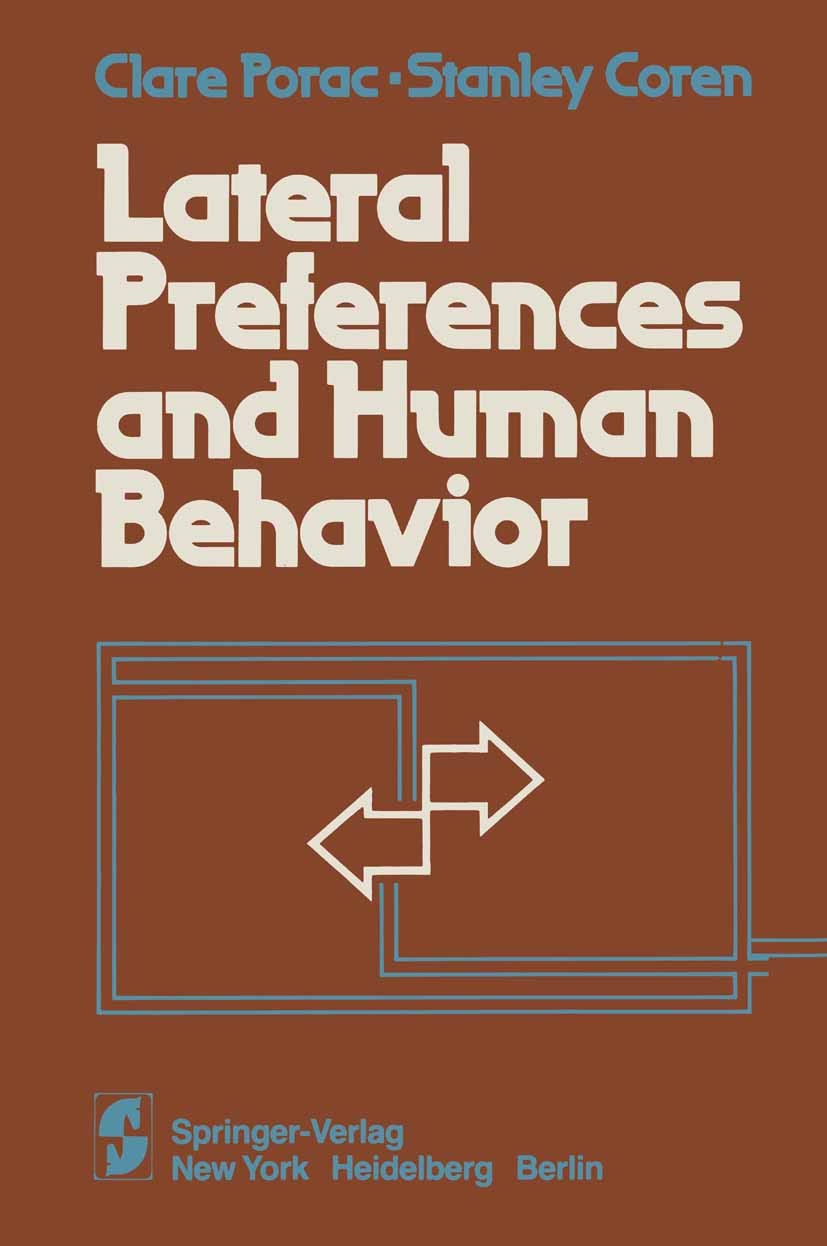| 书目名称 | Lateral Preferences and Human Behavior | | 编辑 | Clare Porac,Stanley Coren | | 视频video | http://file.papertrans.cn/582/581829/581829.mp4 | | 图书封面 |  | | 描述 | Lateral preferences are strange, puzzling, and on the surface, not particularly adaptive aspects of behavior. Why one chooses habitually to write or to brush the teeth with the right hand, while a friend or family member habitually uses the left hand, might be interesting enough to elicit some conversation over dinner or a drink, but certainly does not seem to warrant serious scientific study. Yet when one looks at human behaviors more carefully, one becomes aware that asymmet rical behaviors favoring one side or the other are actually a fairly universal characteristic of human beings. In the same way that we are right or left handed, we are also right or left footed, eyed, and eared. As a species, we are quite lopsided in our behavioral coordinations; furthermore, the vast majority of us are right sided. Considering that we are looking at a sizable number of behaviors, and at a set of biases that seem to be systematic and show a predictable skew in the popUlation, the problem takes on greater significance. The most obvious form of lateral preference is, of course, handedness. When studying behavioral asymmetries, this is the issue with which most investigators start. Actually, we | | 出版日期 | Book 1981 | | 关键词 | Lateralität; Psychopath; Psychopathy; START; behavior; coordination; emotion; environment; family; human beha | | 版次 | 1 | | doi | https://doi.org/10.1007/978-1-4613-8139-6 | | isbn_softcover | 978-1-4613-8141-9 | | isbn_ebook | 978-1-4613-8139-6 | | copyright | Springer-Verlag New York Inc. 1981 |
The information of publication is updating

|
|
 |Archiver|手机版|小黑屋|
派博传思国际
( 京公网安备110108008328)
GMT+8, 2025-12-19 18:55
|Archiver|手机版|小黑屋|
派博传思国际
( 京公网安备110108008328)
GMT+8, 2025-12-19 18:55


